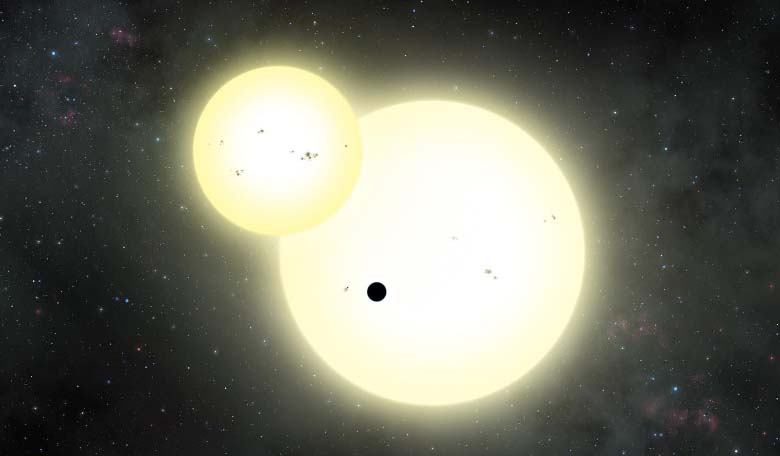With the aid of the largest, most coordinated network of its kind, a team of researchers have discovered a “Tatooine” planet; a planet that orbits two suns and is named so after Luke Skywalker's homeland in "Star Wars.”
The planets official status is Kepler-1647b, a Jupiter size planet with a very long orbital period – taking roughly three Earth-years to orbit its host stars – that is also the largest transiting circumbinary planet (CBP) found to date. The discover was made by a research team based at NASA's Goddard Space Flight Center and San Diego State University, however it was members of the "KELT Follow-Up Network,” a crowdsourcing initiative set up by Joshua Pepper, an assistant professor of physics at Lehigh University, to gather observations worldwide that helped confirm its identity.
With the advent of films such as Star Wars, planets with more than one sun have long captivated our imagination, yet it is only in the past few years that direct evidence of their existence has emerged. “Finding circumbinary planets is much harder than finding planets around single stars," said SDSU astronomer William Welsh, one of the paper's coauthors. "The transits are not regularly spaced in time and they can vary in duration and even depth."
The planet was first spotted in 2011 by Laurance Doyle, an astronomer at the SETI Institute, however it has taken a few years of further research, plus more data gathered with the Kepler telescope, to confirm the transit involved two suns. "During the lifetime of the Kepler Mission, we've only had a handful of opportunities to see the moments when this planet could align and block out the light from both stars, so the fact that we've found anything at all is pretty amazing," said Stephen Kane, an associate professor of astrophysics at San Francisco State University and co-author of the paper. "We weren't expecting to find anything like [Kepler-1647b], with such a long orbital period because those kinds of planets tend to fall through the cracks, but when we saw more than one transit and realised that this is the real deal, it was very exciting discovery to make."
Kepler-1647b shares some similarities with Earth: it is approximately 4.4 billion years old, roughly Earth's age, and the stars it orbits are similar in size to our Sun. However, despite orbiting within its stars "habitable zone”, the planet is believed to be a gas giant and therefore unable to support life. "Habitability aside, Kepler-1647 b is important because it is the tip of the iceberg of a theoretically predicted population of large, long-period circumbinary planets", said SDSU astronomer William Welsh, one of the paper's coauthors.
Members of the team are already working on establishing if giant planets like Kepler 1647b are host to moon systems, like our own Jupiter and if so, what is the possibility that these moons are capable of supporting life as well. "Hopefully [finding Kepler-1647b] is a sign of many more of these kinds of discoveries to come,” said Kane.











